Advisors seeking to limit principal risk within portfolios may consider structured notes.
Why Consider Downside Protection?
In the ever-evolving investing landscape and amid always-present uncertainty, advisors are constantly seeking innovative ways to navigate the complexities of the market.
The latest CAIS-Mercer Survey found that certain advisors surveyed seeking to diversify risk, enhance returns, supplement income, and preserve capital allocated to structured notes to pursue these objectives.
In this blog post, we will explore certain structured notes designed to provide a level of downside protection and potentially limit loss of principal during market drawdowns.
Investment Objective: Protection
Structured notes (commonly known as structured products) generally refer to senior debt securities that have a return potential that is linked to another asset class, such as broad-based equity indices, single stocks, currencies, or commodities. These investments typically seek to provide a potential coupon payment, enhanced upside participation, and/or a measure of downside protection to the underlying asset’s performance. Two types of structured notes designed, but not guaranteed, to protect principal are market-linked CDs and protection notes.
Market-Linked CDs
Market-linked certificates of deposit (CDs) are a type of structured note that provides investors with exposure to the performance of an underlier(s) while carrying characteristics associated with traditional CDs, such as full principal protection via FDIC insurance, up to applicable limits.
Protection Notes
Protection notes are another category of structured notes designed to protect from potential losses. These notes primarily aim to limit downside principal risk while still providing an opportunity for equity-like returns. Protection notes are backed by the creditworthiness of the issuer. Any payment or delivery to be made on a structured note, including any repayment of principal, depends on the creditworthiness and ability of the issuer to satisfy its obligations.
Beyond market-linked CDs and protection notes, structured notes may offer various types and degrees of protection to help mitigate principal risk
What Are the Different Types of Downside Protection?
100% Floors
A 100% floor offered by an issuer creates the potential for protection against the downside market risk of the underlier whereby if the underlier remains the same or declines from the initial level to the final underlier level, the investor will receive their initial investment at maturity. Available as a structured note or a market-linked certificate of deposit (a “CD”).
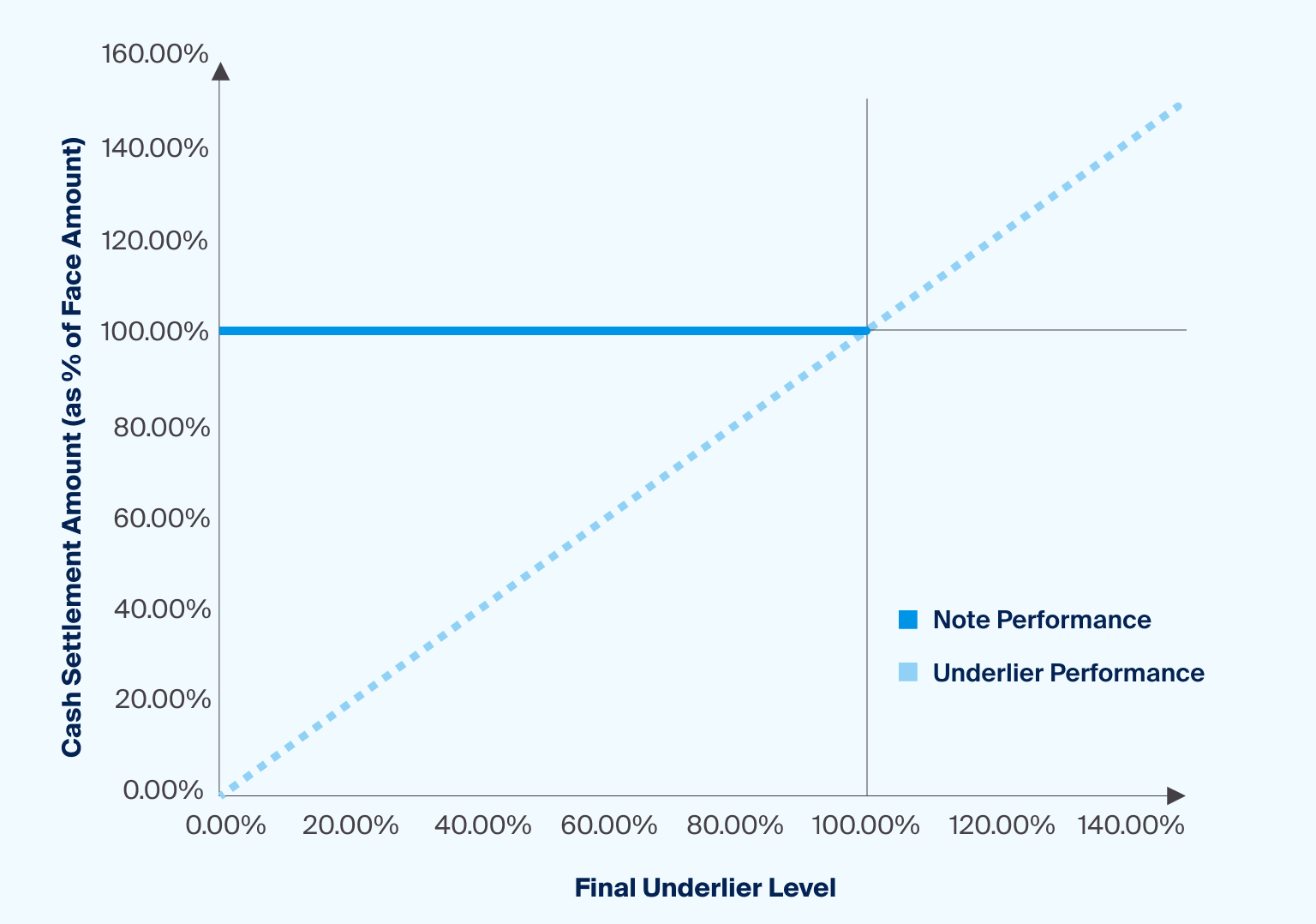
Sample Illustration of a 100% Floor
Partial Floors
A partial floor offered by an issuer creates the potential for partial protection against the downside market risk of the underlier, whereby the investor will be exposed to any negative underlier performance down to the floor percentage at which the investor will receive a set percentage of their initial investment at maturity.
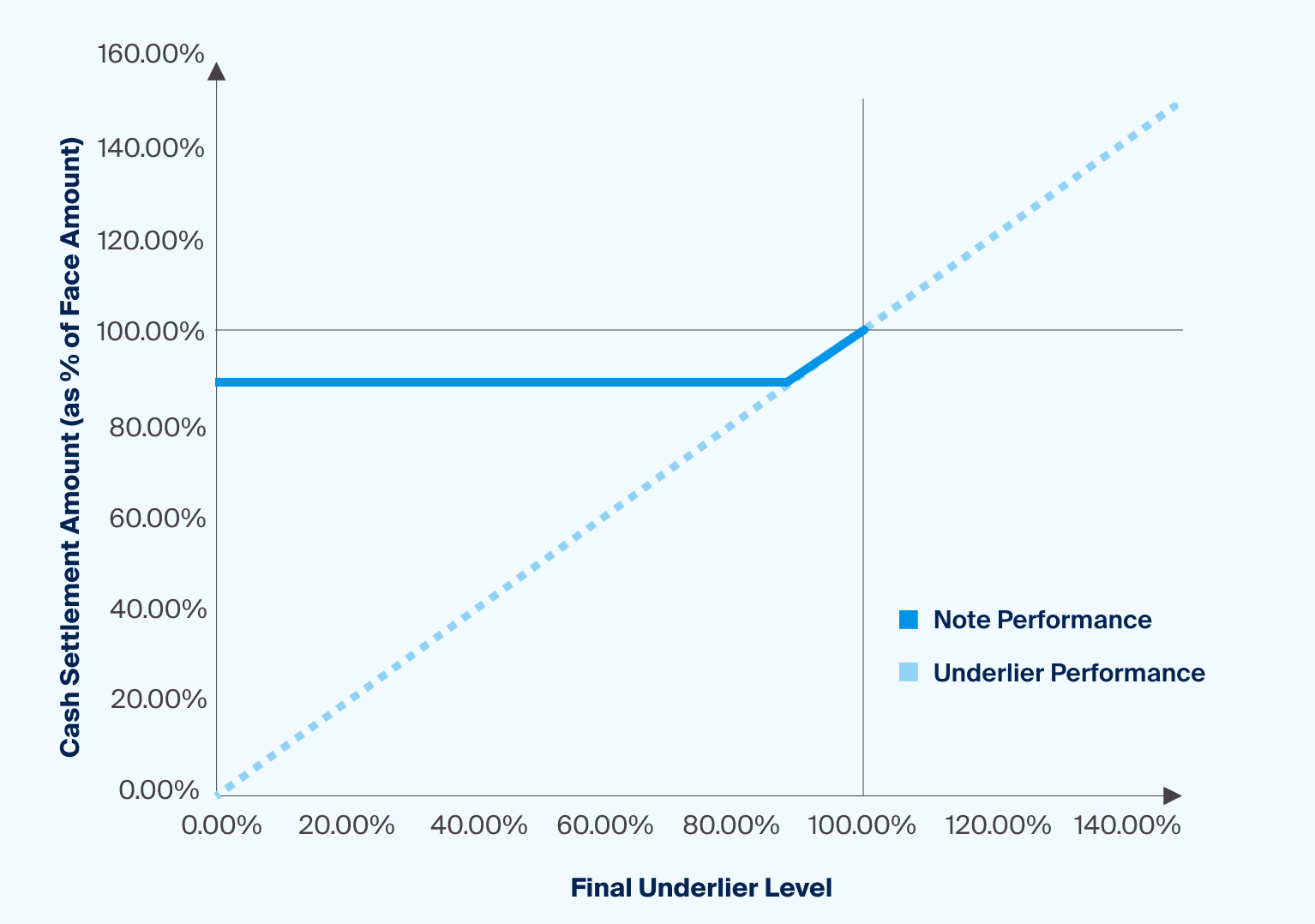
Sample Illustration of a Partial Floor (90%)
Buffers
Hard buffers, also known as hard protection, vanilla buffers, vanilla airbags, and static buffers, may protect a portion of principal investment from the downside market risk of the underliers, whereby if the underlier declines below the buffer level the investor will be exposed to the underlier return at maturity, lessened by the buffer amount. Depending upon market conditions and the underlier, there may be almost a full loss of principal investment at maturity despite the hard buffer.
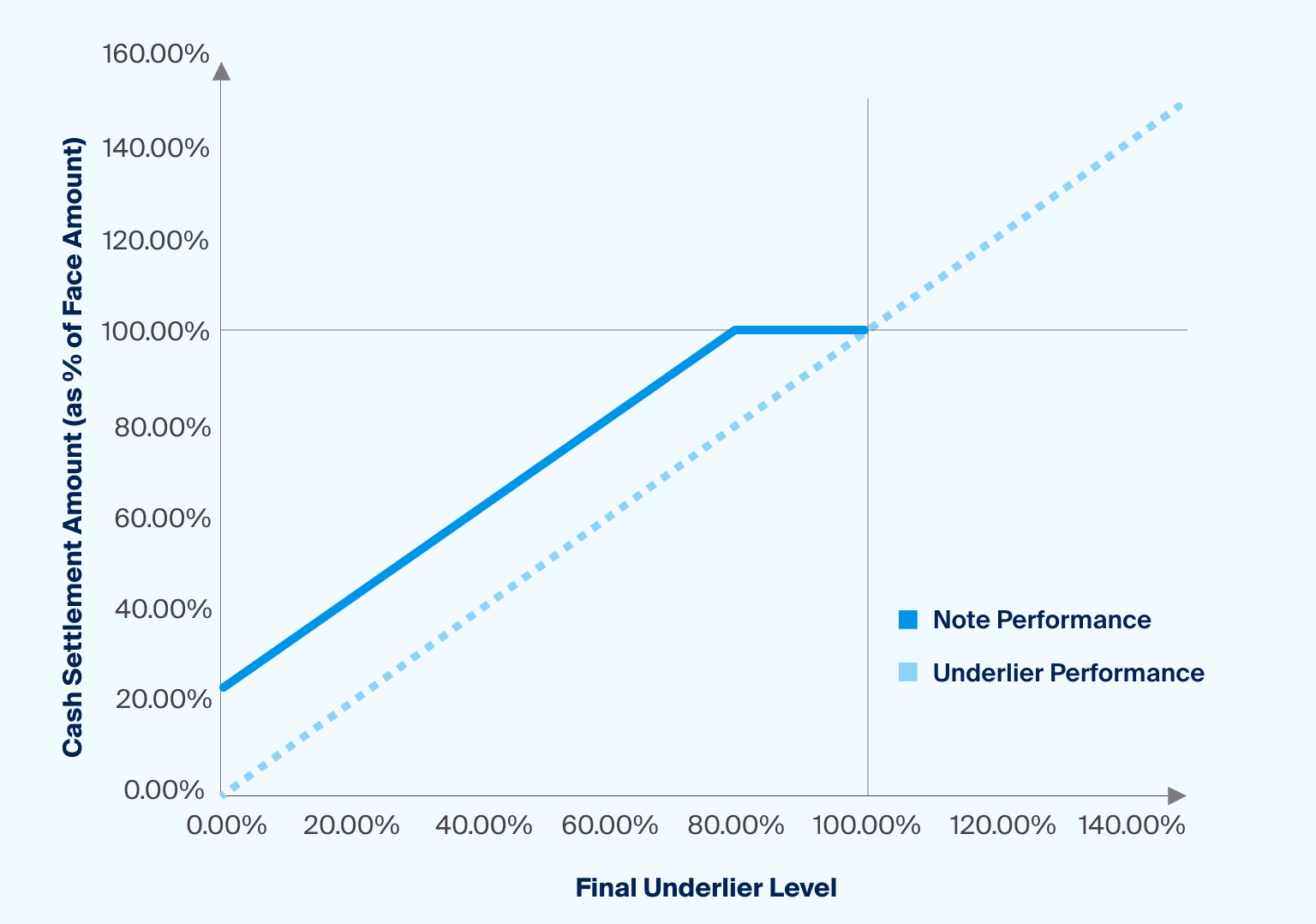
Sample Illustration of a Hard Buffer
Geared Buffers, also known as levered buffers, geared airbags, and fading buffers, may protect principal investment down to the buffer level. If the underlier declines below the buffer level the investor will lose at a rate greater than 1% of for each 1% that the underlier is less than the buffer level. Depending upon market conditions and the underlier, there may be full loss of principal investment at maturity despite the geared buffer.

Sample Illustration of a Geared Buffer | 75% Threshold (25% Geared Buffer)
Barriers
Barriers, also known as soft protection, cliff loss, trigger, and contingent buffers, may protect principal investment down to the barrier level. If the underlier drops below the barrier level, the investor will be exposed to the underlier return on a 1 to 1 basis. Depending upon market conditions and the underlier, there may be a full loss of principal investment at maturity despite the barrier. Barriers can be observed at different observation frequencies.
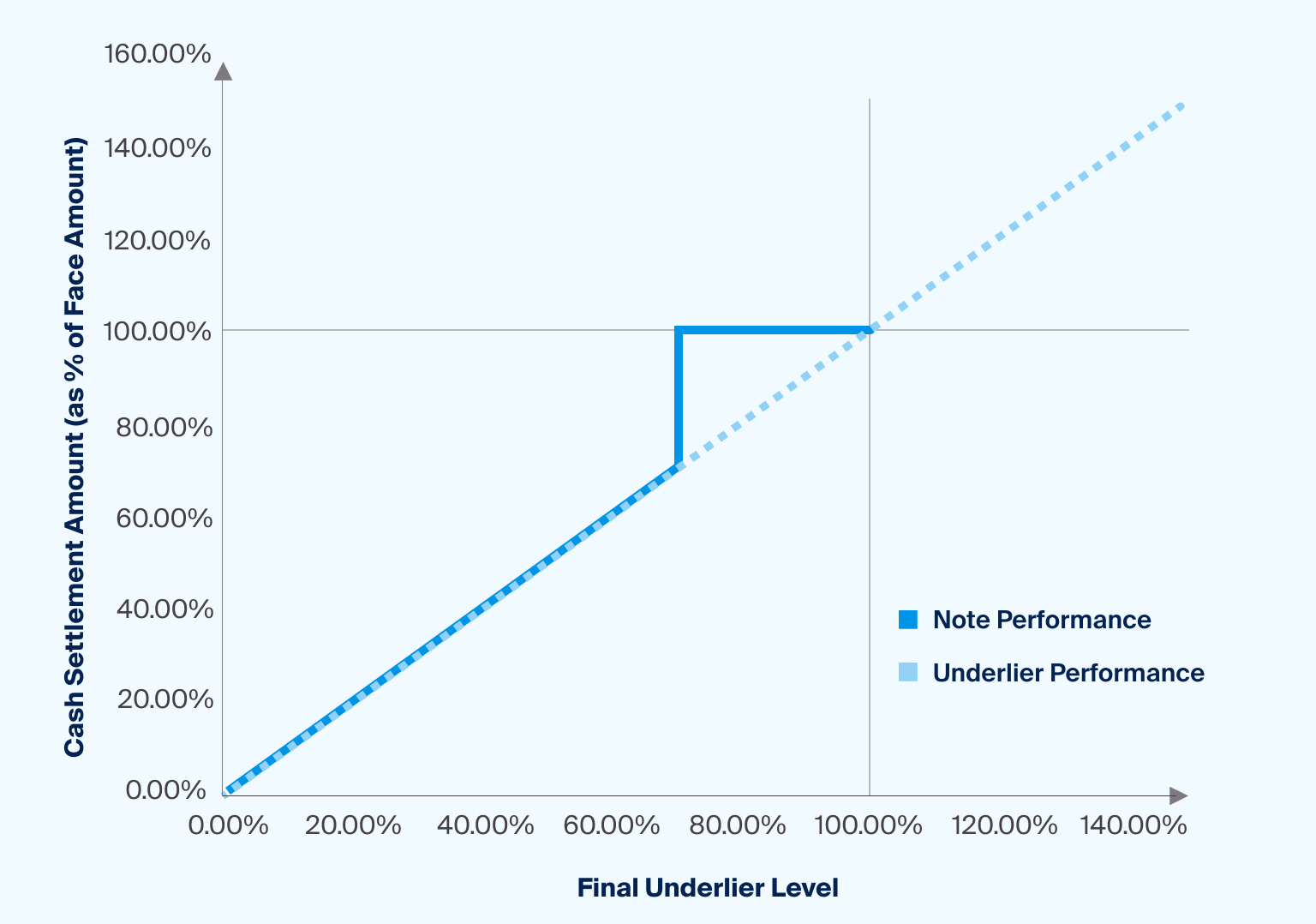
Sample Illustration of a Barrier | 70% Barrier
An in-the-money digital barrier may provide a specified digital return down to the barrier level. if the underlier drops below the barrier level the investor will be exposed to the underlier return on a 1 to 1 basis. Depending upon market conditions and the underlier, there may be a full loss of principal investment at maturity, despite the barrier. Barriers can be observed at different observation frequencies.
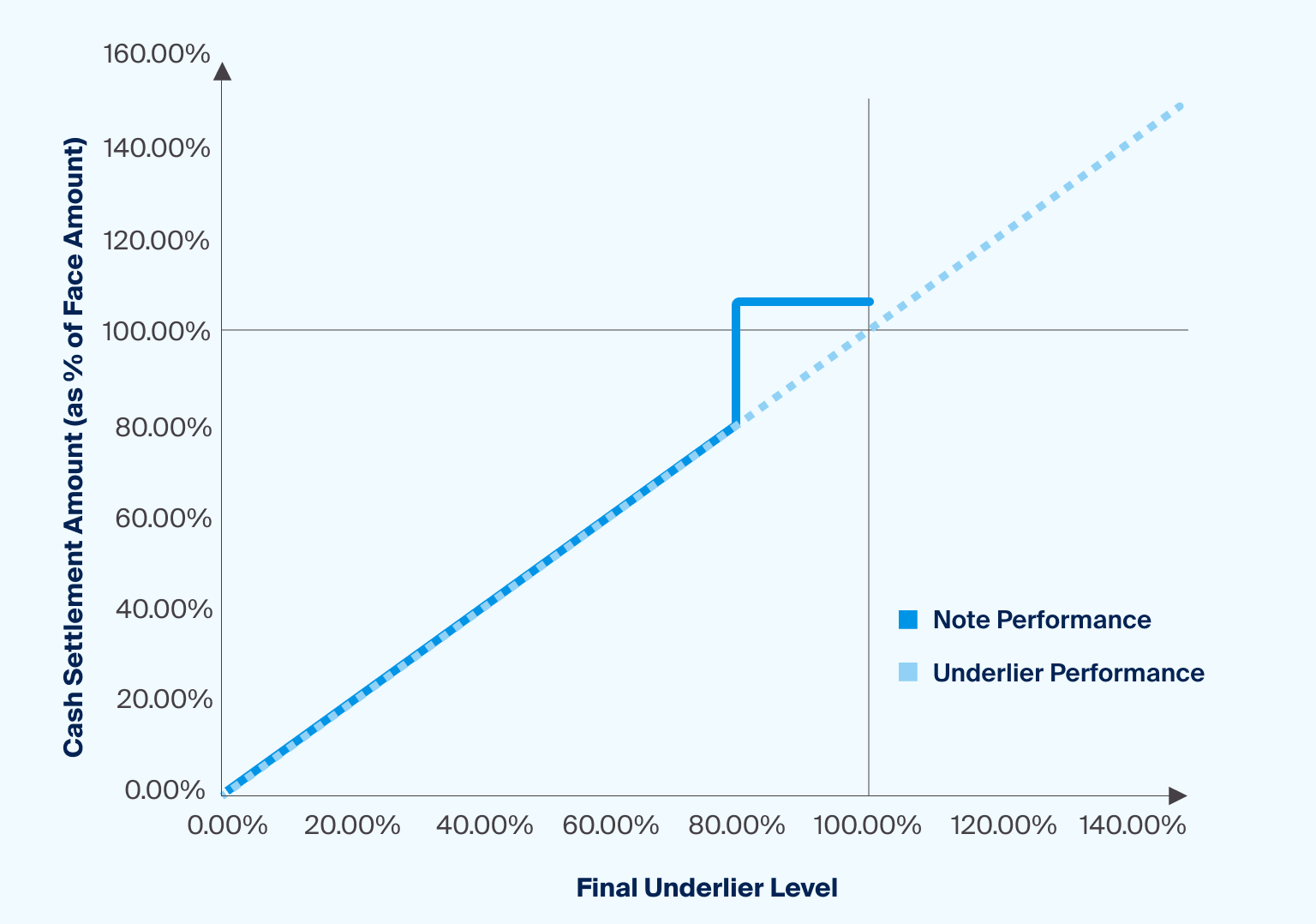
Sample Illustration of an In-The-Money Digital Barrier | 80% Barrier (4% Digital Return)
Dual Directionals
A dual directional buffer, also known as a bearish shark fin, twin-win, and absolute return, may provide an absolute return exposure relative to the underlier. If the underlier drops below the buffer level, the investor will be exposed to the underlier return at maturity, lessened by the buffer amount. Depending upon market conditions and the underlier, there may be almost a full loss of principal investment at maturity despite the buffer.
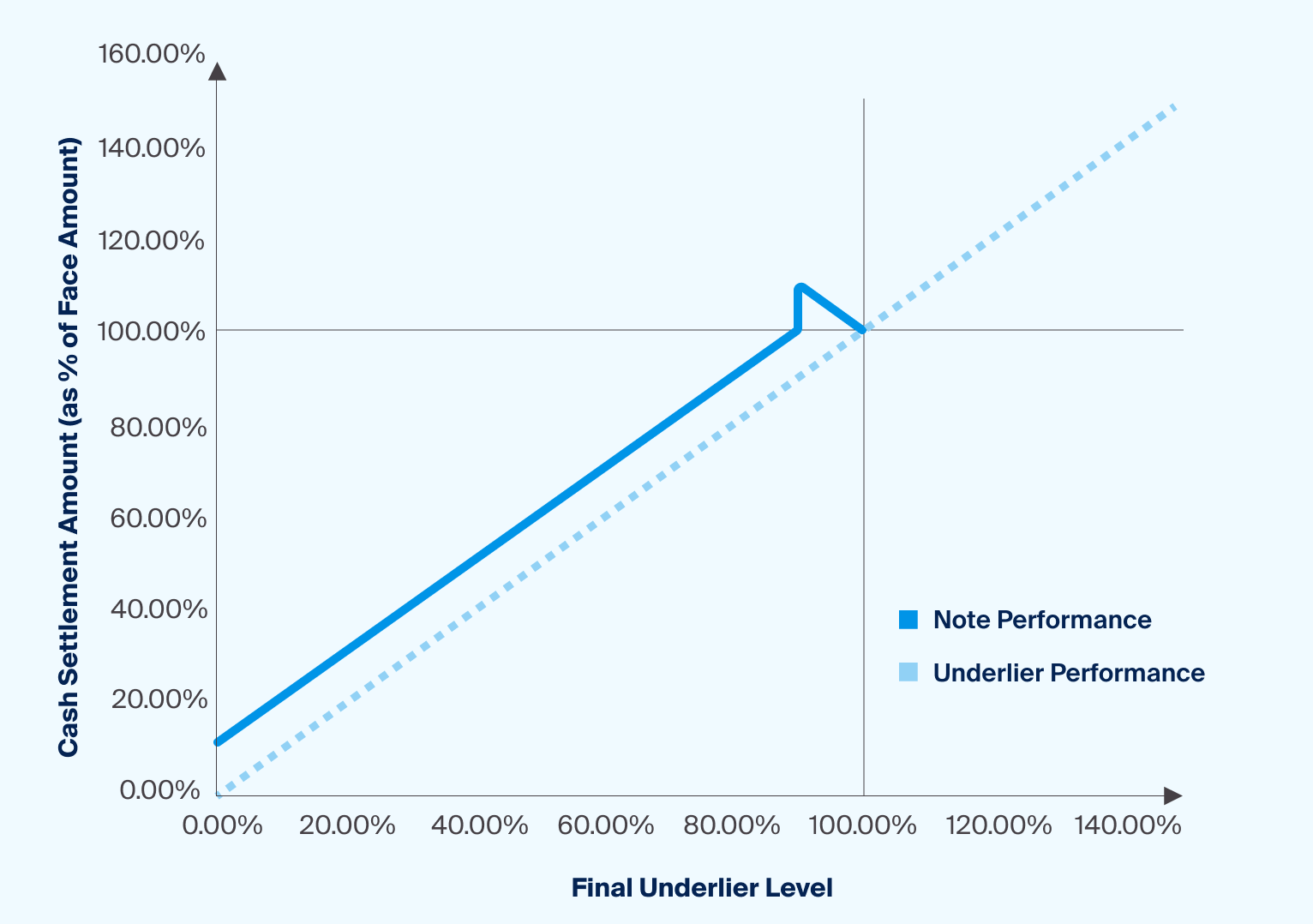
Sample Illustration of a Dual Directional (Buffer) | 90% Threshold (10% Absolute Return Buffer)
A dual directional barrier may provide an absolute return exposure relative to the underlier. If the underlier drops below the barrier level, the principal investment will be exposed to the underlier return on a 1 to 1 basis. Depending upon market conditions and the underlier, there may be a full loss of principal investment at maturity despite the dual directional barrier.
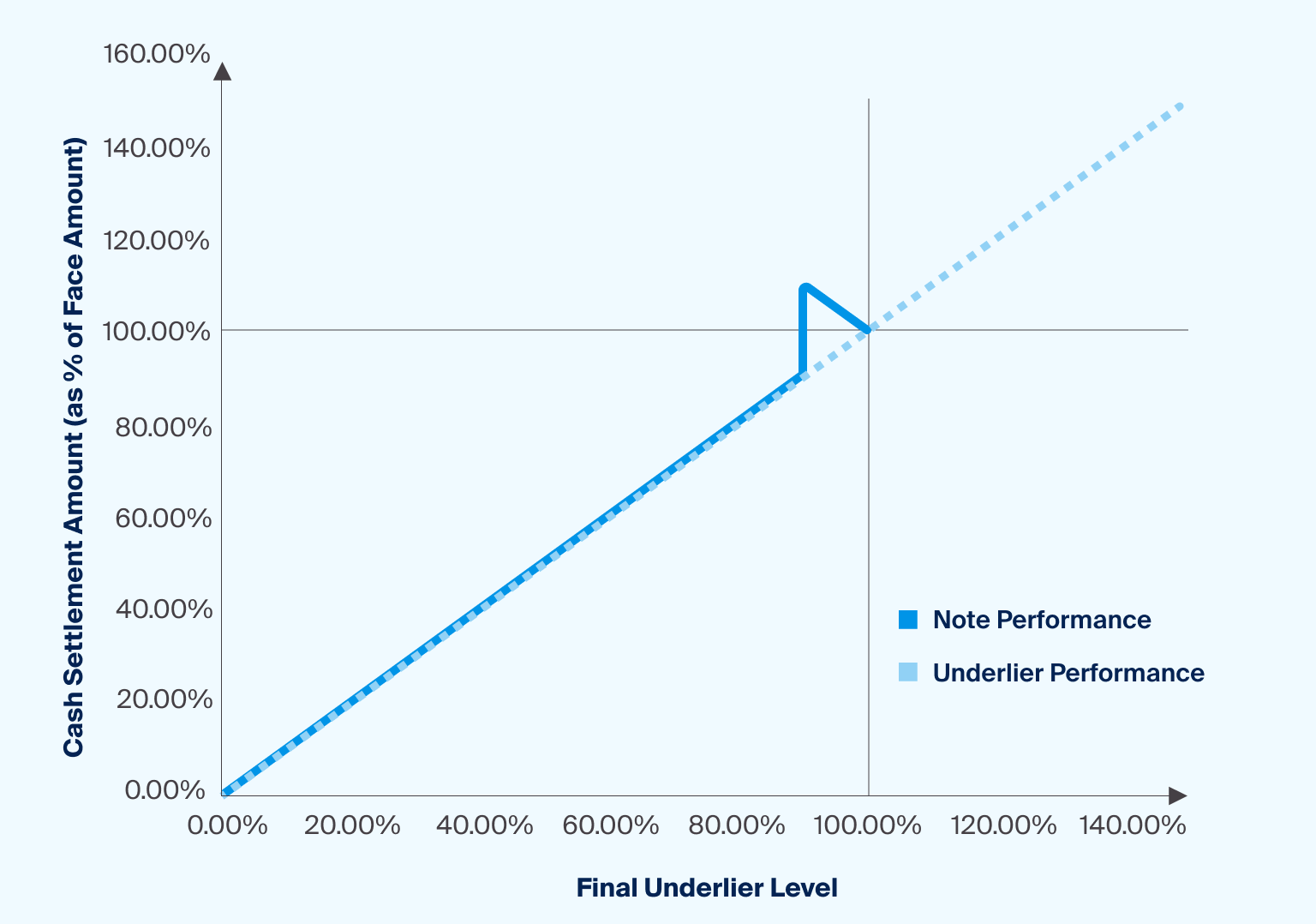
Sample Illustration of a Dual Directional Barrier | 85% Absolute Return Barrier
Seeking Balance Between Risk and Reward
In conclusion, structured notes, particularly market-linked CDs and protection notes, may provide various features designed to balance risk and return. The various forms of downside protection, including floor, partial floor, buffer, barrier, and dual directional, can cater to different risk appetites and investment objectives. As with any financial instrument, it is important to understand the specific terms of structured notes, review prospectuses, and consider the context of the overall investment strategy. Prior to investing, please review notable investment risks associated with structured notes, such as:
Credit Risk
Market Risk
Liquidity Risk
Reinvestment Risk
Tax Treatment
Dividends & Distributions on Underlying Assets
Principal Risk





